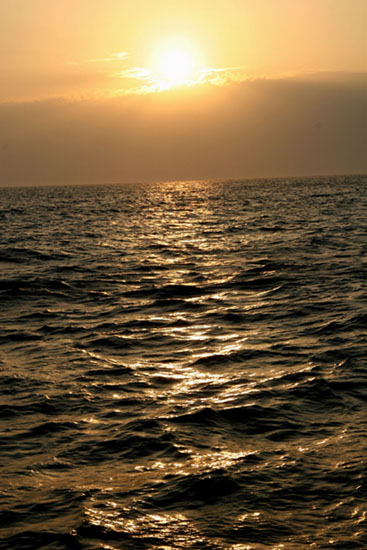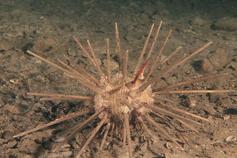You are here
Cañón de Creus Campaign - September 2009 - CSIC # Message 4
Message 4
Dawn on Cape Creus. The first sunbeams announce a bright day, but with intense north wind. Last night we had to finish the tasks abruptly because the storm threatened the safety of the people and the equipment on deck. The captain suggested that we take shelter to the south of Cap Norfeu to wait for the storm to abate.
We reached the shelter area by 2 am. There is an apparent calm onboard because the activities on deck were postponed. But we take advantage of this calm, just at daybreak, to check the collected samples, examine the video transects, and repair the equipment affected by the storm. The ROV focuses our attention and our distress, since one of the engines broke, and Gavin is working tirelessly to find a solution. If he fails, a very high percentage of the campaign expectations would be frustrated. We also have a need to sew the drag net which was torn by one of the many old and abandoned longliners that are in the area. In the lab, we check the samples, identify the organisms, take pictures of the most important ones, and with this information we can redesign and plan future sampling.
Through the samples we have collected a large number of sessile organisms (always attached to the bottom), and filtering organisms (which capture the particles the currents continually carry on the bottom. Among these, we find pennatulaceans (known as sea pens), that form colonies in the shape of pens with strong spicules, and can live on sand and mud bottoms thanks to a turgid foot penetrating the sediment as a root. These organisms, in addition to stabilizing the substratum, have a function similar to the crinoids previously discussed, since they also favor the retention of surrounding particles, where other organisms find food and shelter in their colonies.
The bottoms, where these organisms predominate, are essential for the good operation of the platforms marine ecosystems; consequently, they should be a priority for protection
By mid morning, Gavin resolves the ROV problems thanks to his high level of professionalism. In addition, thanks to the expertise of the B/O García del Cid seamen, the drag scraper is repaired and the zooplankton net improved. Despite this success, we are not able to continue with the operations because the current storm does not abate. We await then for the weather to improve, and we continue with the lab work.
(Posted 25 September 2009)













